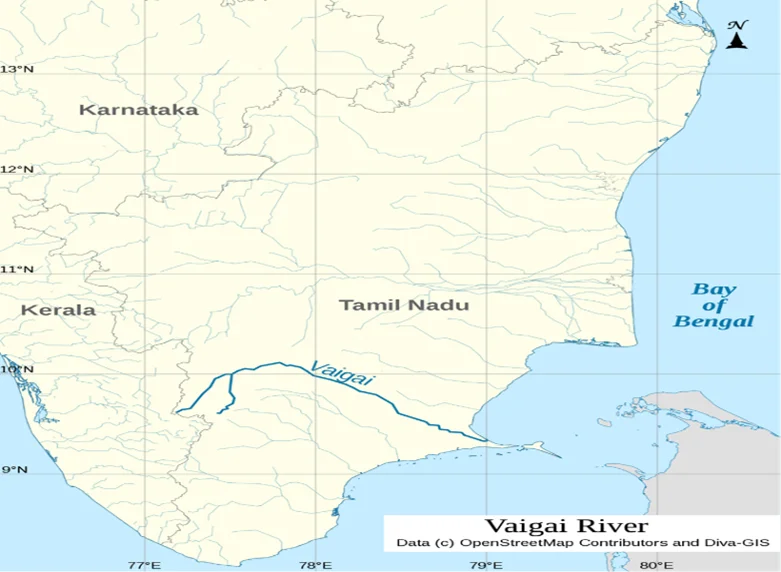History and Art and Culture
Context: Artefacts with Tamil-Brahmi script unearthed at Keeladi to find a special place in the museum.
About River Vaigai:

- Vaigai is a river in Tamil Nadu.
- The river is also referred to as Shiva Ganga in many places.
- The river originates in the Varusanadu Hills, the Periyar Plateau of the Western Ghats range.
- The river finally empties into the Palk Strait
- Its main tributaries are Suruliyaru, Mullaiyaru, Varaaga Nadhi, Manjalaru, Kottagudi, Kridhumaal and Upparu.
- The Vattaparai Falls are located on this river.
About Tamil-Brahmi script:
-
- Tamil-Brahmi, was a variant of the Brahmi script in southern India.
- It was used to write inscriptions in the early form of old Tamil.
- The Tamil-Brahmi script has been paleographically and stratigraphically dated between the third century BCE and the first century CE.
- It constitutes the earliest known writing system evidenced in many parts of Tamil Nadu, Kerala, Andhra Pradesh, and Sri Lanka.
- It is also known as Tamizhi or Damili.
About Brahmi script:
- Brahmi was the main script used in India since the 3rd century.
- The Ashokan inscriptions dating to the third century BCE used the Brahmi script, and are the earliest evidence of the use of Brahmi.
- It is the ancestor of the Brahmic family of scripts, which includes all Indian scripts, like Devanagari, Odia, Gujarati, Tamil, Telugu, etc from India, and some of the ancient scripts of Sri Lanka, Burma, and south-east Asian countries of Java, Sumatra, and Cambodia.
- James Prinsep was responsible for deciphering Brahmi in 1838.
About Sangam Age:
- The period roughly between the 3rd century B.C. and 3rd century A.D. in South India (the area lying to the south of river Krishna and Tungabhadra) is known as Sangam Period.
- The Sangam literature includes Tolkappiyam, Ettutogai, Pattuppattu, Pathinenkilkanakku, and two epics named – Silappathikaram and Manimegalai.
- The first Sangam, held at then Madurai, was attended by gods and legendary sages but no literary work of this Sangam is available.
- The second Sangam was held at Kapadapuram, but all the literary works had perished except Tolkappiyam.
- The third Sangam at Madurai was founded by Mudathirumaran. It was attended by a large number of poets who produced voluminous literature, but only a few survived.
Previous Year Questions
Q.1) Consider the following pairs: (2022)
Site of Ashoka’s major rock edicts Location in the State of
- Dhauli Odisha
- Erragudi Andhra Pradesh
- Jaugada Madhya Pradesh
- Kalsi Karnataka
How many pairs given above are correctly matched?
- Only one pair
- Only two pairs
- Only three pairs
- All four pairs
Q.2) Which one of the following statements about Sangam literature in ancient South India is correct? (2022)
- Sangam poems are devoid of any reference to material culture.
- The social classification of Varna was known to Sangam poets.
- Sangam poems have no reference to warrior ethics.
- Sangam literature refers to magical forces as irrational.














